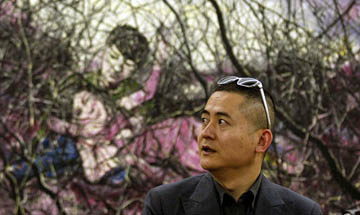
Zeng Fanzhi, 2010, photo Alain Truong, canal.blog
Zeng Fanzhi
曾 梵 志
Painter, *1964 Wuhan, lives in Beijing

Zeng
Fanzhi, 2010, photo Alain
Truong, canal.blog
Zeng Fanzhi grew up during the Chinese Cultural Revolution. He attended Hubei Academy of Fine Arts - he graduated in 1991 - where he was influenced by German Expressionism.
He became one of the influential and
most successful artists of the younger generation.
Photos from
ShanghArt
Hospital
Series
1992-1994
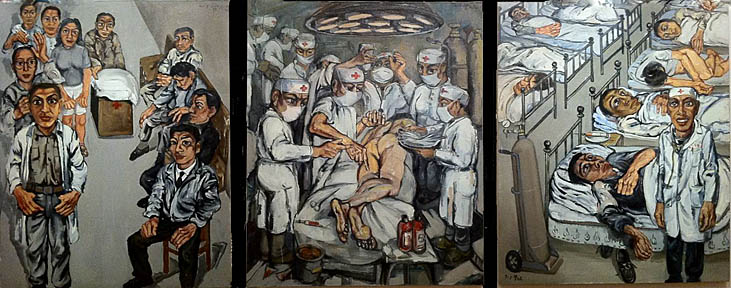
Hospital
Series, 1994,
His early works depicted scenes in a
nearby hospital, painted in the expressionist mode: hands, faces.
However, even a cursory examination reveals that contrary to German
Expressionism, he does not imply any social criticism, the doctors
are happy, the patients in the often brutal scenes (not shown here)
at worst distressed by pain: The coarse features are actually hiding
their and Zeng's emotions.
Zeng appears to share this need with
many of his artist colleagues, if not with most Chinese: personal
emotions are not publicly displayed....
Mask Series
1995-2001
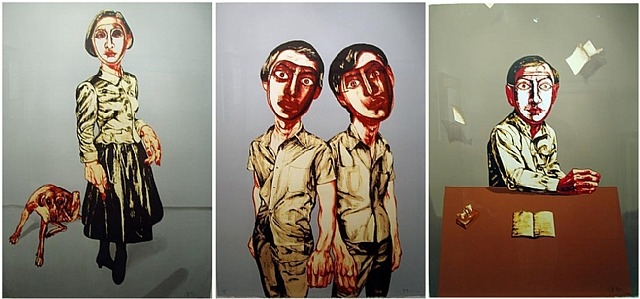
Mask
Series No 2-4, 1995, 114x84 cm each
For the next six years, Zeng,
dissatisfied with the lack of depth in his painting, goes even a step
further and hides the faces of the people he depicts behind
impersonal paper masks! For the Western viewer this now appears like
true social criticism – but was it that for Zeng too? He has the
painterly skills to say anything he wants to, but doesn't notice this
shortcoming.
Incidentally, this psychological disability is one
reason underlying Ai Wei Wei's humanitarian outcry in support of the
victims of 2008
Sichuan earthquake disaster, in which 69 000 people died –
among them many children.
Portrait Series –
“We”
2000-2003
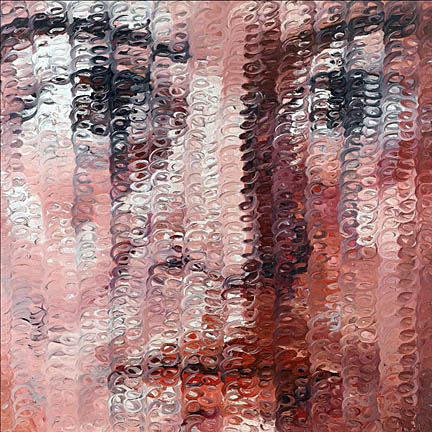
“We-no2”,
2002, Selfportrait, 250x250 cm
In his search for the emotional content of his portraits Zeng examines again and again his own face, inventing ever new techniques of hiding the telltale signs. His camouflages are novel and ingeneous, like in this selfportrait of 2002.
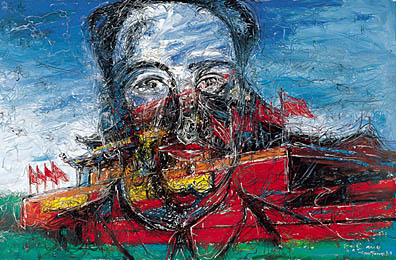
“Tian'anmen”,
2004, 215x330 cm
Zeng's breakthrough on the international market came with this large painting commemorating the fifteenth anniversary of the 1989 Tian'anmen massacre. The overlay of Mao Zedong's eyes and the Heavenly Gate to the Forbidden City expresses the horror of the event masterfully – although Mao was dead since 1976.
Portraits
2004-2006

Great
Men, 2004
The Great Men of Communism, Zeng portrays in realist if idealized paintings, - they are dead effigies and except for Mao not Chinese.
|
|
|
But when he arrives at Warhol (why Warhol?) and his own portrait, their detailed features vanish again, this time in a dense thicket of branches.
“A Land so Rich in
Beauty...” (1936 Mao Poem)
2006-2008
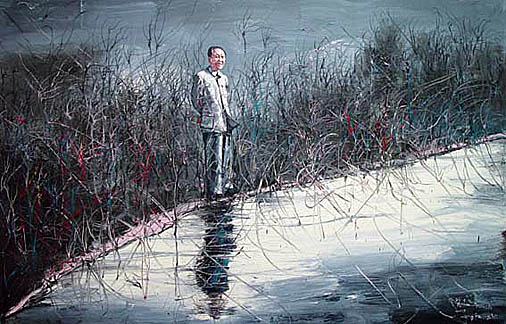
A
Land so Rich in Beauty No 1, Mao Zedong,
2006, 215x330 cm
The dense macchia he invented for a
new series of landscape paintings that became Zeng's characteristic
mark for the next 6 years, was motivated by a poem
of Mao Zedong, whose benevolently smiling figure graces painting
No1 of this series.
It is impossible for an American audience to
fathom and appreciate the deep emotions towards the “great men”
in the childhood memories that some of us carry with us, be it,
Stalin, Hitler, or Mao Zedong. They never vanish completely – not
even after 30 years.
For a more charitable interpretation of
Zeng's portraits see Robert
Morgan/ ShanghArt
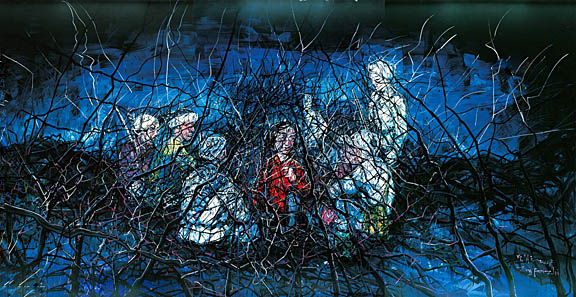
Untitled,
2007, 280x540
The series of intriguing landscapes that Zeng painted between 2007 and 2009 truly express his sentiments for the Land of China, the brambles that cover its mountains and rivers, 山水. Except for a Hui minority family, people have vanished from his canvasses and a white elephant appears to him in the thickets, who promises 太平有象- tai ping you xiang, stability and heavenly peace.
|
|
|
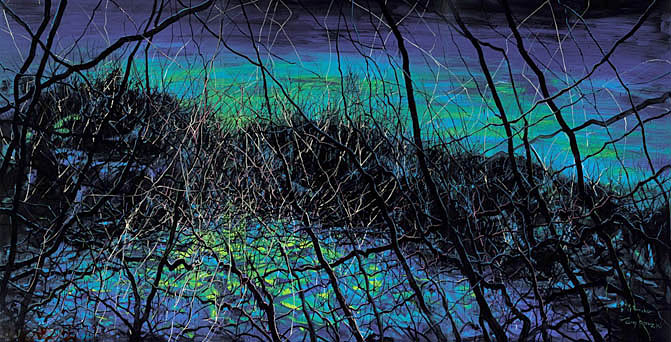
Untitled,
2008, 330x645 cm
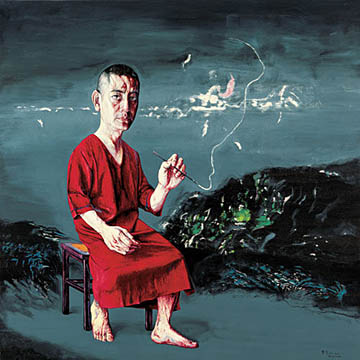
Selfportrait,
2010, 200x200 cm
Comments by another observer:
“With
outsized heads and misshapen bodies, none of Zeng's portraits of
individuals smile out of the canvas; on the whole, their stares are
blank. In addition, Zeng often leaves the bodies apparently
unfinished, with paint dripping down absent limbs. The bodies in his
portraits appear as if smeared across a flat surface. Furthermore,
with his tendency to exaggerate hands and diminish bodies, his
portraits straddle the boundary between portrait and caricature.
Among his best-known works are those of the Mask Series, one of
which, Mask Series, 1996, no. 6, was sold for just over $9.7 million
in 2006. Only in these masked figures do we detect Joker-like smiles
that reveal nothing of the individual behind the mask.”
By
Stephanie Chang